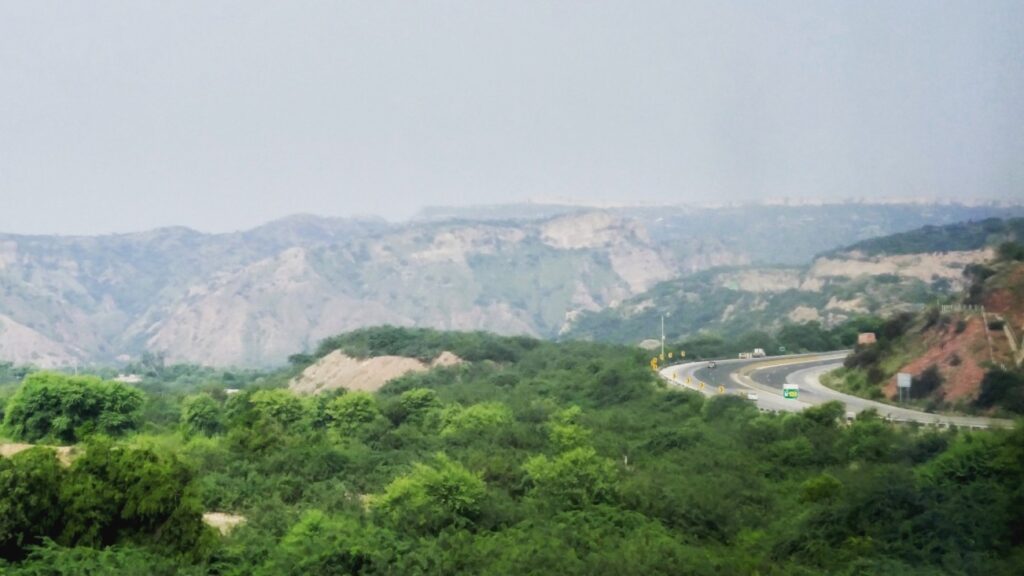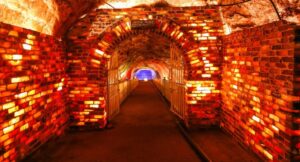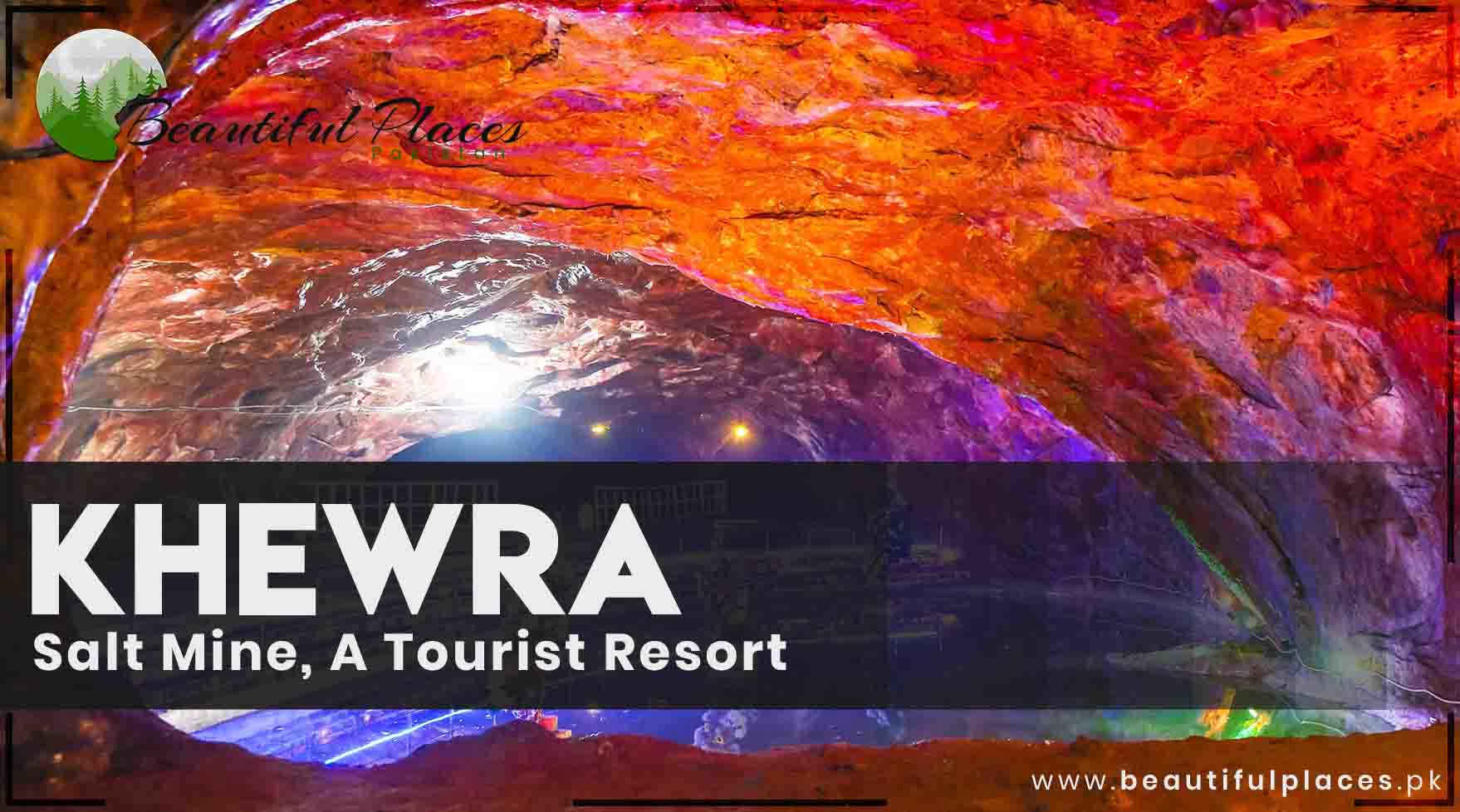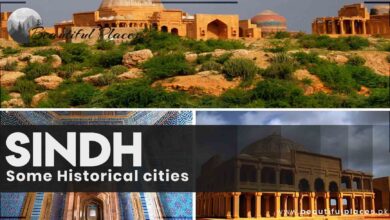Salt Range
(Evaporated Sea)
Khewra Salt Mine (Mayo Salt Mine)
The Khewra Salt mines were discovered in 326 B.C during the fight between the Great Alexander and Raja Porus on the shoreline of the river Jhelum. The horses of the troopers were found licking the stones during grazing.
This gave them a clue about the presence of salt. Now, the mining of salt is continued here. Khewra Mine is the second largest salt mine in the World. About 220-million-ton minerals are located here.

The Kohistan Range starts from Bego wala near the river Jhelum and ends at Kala Bhag River Indus. Its length, width, and height are 300km, 8 to 33 km, and 2200 to 4990 feet (Koh Sakesar) respectively.
It is also considered a geological museum. It is because there are traces of the pre-Cambrian era to AH about a billion years ago. In1849, the British started mining on the basis of Scientific terms.
In 1872, a renowned British mining engineer Dr. Warth dug a large mine to gain access to the salt deposit that is still in operation. Nowadays, salt is being obtained from the seventeen levels of the salt mine.
According to scientific principles, 50% of the salt is extracted while the remaining is left there to ensure the strength of the mine.
Key info about Salt Range
| Attribute | Information |
|---|---|
| Location | Khewra, Punjab, Pakistan |
| Discovery | Ancient times, but officially opened in 1872 |
| Depth | Approximately 945 feet (288 meters) |
| Length | About 18 miles (29 kilometers) of tunnels |
| Salt Reserves | Estimated to have over 600 million tons of salt |
| Salt Composition | Primarily composed of rock salt (halite) |
| Salt Mining Method | Underground mining with drilling and blasting |
| Geological Significance | One of the world’s oldest and largest salt mines |
| Tourism | Major tourist attraction with salt sculptures |
| Health Benefits | Believed to have therapeutic properties |
| Industrial Use | Salt production and various industrial processes |
| Transportation | Salt is transported through rail and road networks |
| Environmental Concerns | Efforts to address salt dust and waste disposal |
Khewra Salt Mine Tourist Resort
Let us travel the mine. You can contact to PMDC office for the guide. A female guide is also there. A mini-train outside the tunnel will take you to travel the 1 km long salt mine. You can travel on foot.
But a train is a better option because he will guide you about different processes and spots. The tourists are only allowed on the sixth floor and they think that is the ground floor. All recreational spots are established there.

A mosque from salt bricks, Chagii mountain, an internet café, Angoori Garden, and a Pakistan minaret are built in the Chandni Chowk located inside the mine. A post office made of salt bricks is also there.
There is a crystal valley below on the right side of the Pakistan minaret. This crystal salt is only found in Pakistan. It is also called Diamond Valley.
The 240 feet high assembly height is estimated by blowing a paper. There is a way called Pul Sirat and a beautiful Sheesh Palace is built from pink crystal salt. After crossing the Pul Sirat, there is Dewar-e-Mohabbat (wall of love) and Dewar-e-Cheen (wall of China).
A pond beyond the wall of China is named “Jheel Saif-ul-Malook”. A portrait of Allama Muhammad Iqbal and the name of Muhammad ﷺ are exhibited on the wall.
On the return from Pul Sirat, there is Anarkali and Nithya Gali. A beautiful restaurant is located near Sheesh Mahal. You can also visit hundreds of years old tracks on the western hill and enjoy an aerial view.
Hospital
A hospital model is placed on the right side of the Chandni Chowk. But the actual hospital is on the seventh floor. In this special hospital, the patients with allergies and Asthma are kept in a different environment for 110 hours.
This type of arrangement is also available in Ukraine and Poland for patients with allergies and asthma. The PMDC tourist resort is located outside the salt mine. You can stay there after your reservation.
You can buy different products made of salts from the shops outside the resort. You can get a bus for Khewra and Pind Dad Khan from Jhelum.
Khewra has located 230 km from Lahore via motorway, and 30 km away on the Pind Dad Khan Road. The distance of Mandra, Dadiyal, Chakwal and Khewra is 160 km from Islamabad.
FAQs
What is the historical significance of Khewra Salt Mine?
Khewra Salt Mine holds historical importance dating back to the time of Alexander the Great. Its discovery by his troops in 320 BC marks the beginning of its historical legacy.
What makes Khewra Salt Mine a unique geological attraction?
The mine is renowned for its extraordinary salt formations, intricate crystals, and naturally occurring sculptures, making it a visually stunning geological marvel.
How can visitors access Khewra Salt Mine?
Khewra Salt Mine is accessible by road, approximately 160 kilometers from Islamabad and 260 kilometers from Lahore, making it a feasible destination for day trips or extended visits.
What wellness opportunities does the mine offer?
The mine’s microclimate, rich in salt particles, is believed to have therapeutic benefits. Visitors can experience these wellness benefits in designated salt therapy rooms within the mine.
Is Khewra Salt Mine suitable for educational visits?
Absolutely. Guided tours offer insights into the mine’s history, geological formations, and cultural significance, making it an enriching educational experience.
How has the mine embraced sustainability in tourism?
Khewra Salt Mine places a strong emphasis on sustainable tourism practices to ensure the preservation of delicate salt formations. Conservation efforts are in place to balance tourism with environmental protection.
Are there recreational amenities available for visitors?
Yes, the mine provides well-maintained pathways, illuminated chambers, cafeterias, and souvenir shops, enhancing the overall experience for visitors of all ages.
What is the artistic significance of the mine’s underground chambers?
Beyond geological wonders, the mine features intricate salt carvings and sculptures, showcasing the artistic capabilities of the miners and adding an artistic dimension to its appeal.
Can visitors explore the mine independently or are guided tours necessary?
While some areas may be explored independently, guided tours are recommended to fully appreciate the mine’s history, geological features, and cultural significance.
Is Khewra Salt Mine suitable for all age groups?
Yes, the mine caters to visitors of all ages. Its diverse attractions, educational value, and wellness offerings make it an inclusive destination for families, students, and tourists alike.
How does Khewra Salt Mine contribute to the region’s cultural heritage?
The mine’s historical legacy, cultural importance, and unique features contribute to the preservation and celebration of the region’s rich cultural and mining heritage.



